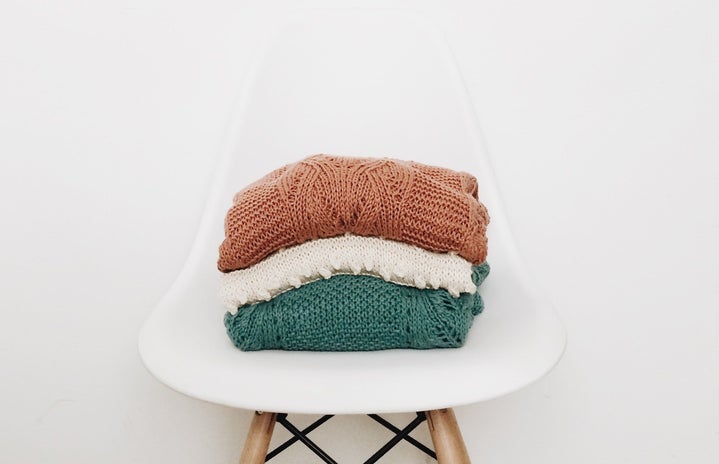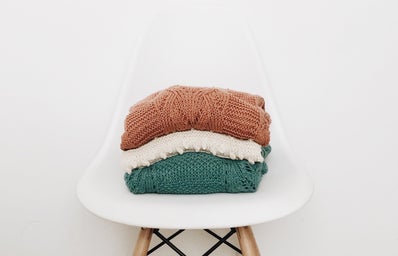About a year ago, I had a conversation with a fellow-fashion-student-friend over lunch that led me to realize how distantly we understand what we wear and how it was made.
In all good fun, we were having a little debate about what luxury fashion really means. I was sharing my take that as consumers, we are intrigued to enroll in the world of luxury to enroll in high status. We often flaunt our branded fashion proudly like a badge permitting us exclusive access into an implicit elite group — yet what we often don’t think about, is that we are also communicating our admiration for that high-fashion house and are ultimately supporting its interactions with people and the planet — which are harmful more often than not. An infamous example is the burning and destruction of unsold stock to preserve designers’ elite reputation — but that’s a conversation for another time.
My friend rebutted by sharing that luxury is about far more than just status or elite badges, and that it’s actually mostly about the higher quality of the product. Then, she added, “it’s handcrafted — it’s handmade.”
I quickly followed: “but all clothes are handmade.”
And this is when the conversation calmly shifted to what we were gonna eat on the menu.
Most of us don’t think about what we wear much. And that’s because . . . well, we’re not supposed to. Just like how you probably don’t think a lot about where your favorite mug is from or how your phone was made.
But why is that? Why don’t we feel inclined to think about how things are made? I think, because maybe if we did, maybe we’d feel more of a connection to what we own — knowing where our belongings have traveled, and who they’ve met along the way. Maybe, then, would we be able to value what we own more, and finally reject throwaway culture for good. Which would disrupt almost entirely how our economy functions — consumption, consumption, consumption…retail, retail, retail. Since President Ronald Reagan came into office in the 80s and notably reduced business regulations and cut taxes with the hopes of recovering our desperate economy at the time, it unleashed mass globalization that has encouraged an uncontrollable and unstoppable growth of complicated, messy supply chains weaving in and out hundreds of corners of the world to be well hidden under wraps.
Take a look at something in your closet. The tag most likely says the make of the garment — what textiles compose the piece — maybe some washing instructions, but definitely the country where it was made. “Made in China,” “Made in Bangladesh,” “Made in Sri Lanka,” “Made in Vietnam,” etc. are stamped into all of the stuff we put on our bodies every day.
Let’s say you have a nice white t-shirt that’s 100% cotton that was “Made in China.” Now ponder this reality for a second: the only truth that we are told in that statement is that the garment was cut and sewn in China, according to various reputable sources such as Good On You. Where the cotton was grown, who it was grown by, what was used in that process, where the cotton was sent to be spun, who it was spun by, where the cotton textile was sent to be cut and sewn in China, what cut and sewed the t-shirt, and who cut and sewed the t-shirt, are all lost in the abyss of mass globalization.
Yes, that’s a lot — I know. Each stage of garment production is significant and intriguing to dive into, but we’re gonna talk about only the cut and sew phase (for now…).
The reality is, every piece of clothing on this planet is made by human hands. Ones that are carefully pushing and pulling textiles in industrial sewing machines, unfortunately, most for hours on end.
The fashion industry is one of the most labor-intensive industries in the world — at least 40 million people today cut and sew garments for a living. Most of these people are women, and most of them are sewing the same stitch for days, weeks, or even years at a time — such as this one woman who had been sewing the same shoulder stitch of a shirt for 14 years, exposed in the Norwegian documentary Sweatshop: Deadly Fashion.
So when I think back at that brief conversation with a friend of mine, which I often do — I’m reignited with a drive to amplify the lives and work of these women, as most of us, even individuals pursuing careers in fashion, don’t quite know their significance and strength. Yes, we should fight for more fair rights for them — but that starts with acknowledging the vast work that they do, and the insane strength and skill that they have. Because let’s face it — sewing clothes as exceptionally and speedily as they do is no easy feat, and I can attest to that as a proudly mediocre sewist that needs days if not weeks to finish a single garment — something these garment workers can accomplish in hours.
I encourage you to take a look at your clothes today, maybe the one’s on your body right now — and acknowledge the time and care some women took to create what you’re wearing. We may not know who exactly they are, yet, but policy change starts with changing mindsets — so let’s start thinking about these women more, so maybe we’ll shop more in tune with our values.
For ideas on how to do that, check out my article below:
Want to keep up with HC UMass Amherst? Be sure to follow us on Instagram, listen to us on Spotify, like us on Facebook, and read our latest Tweets!





